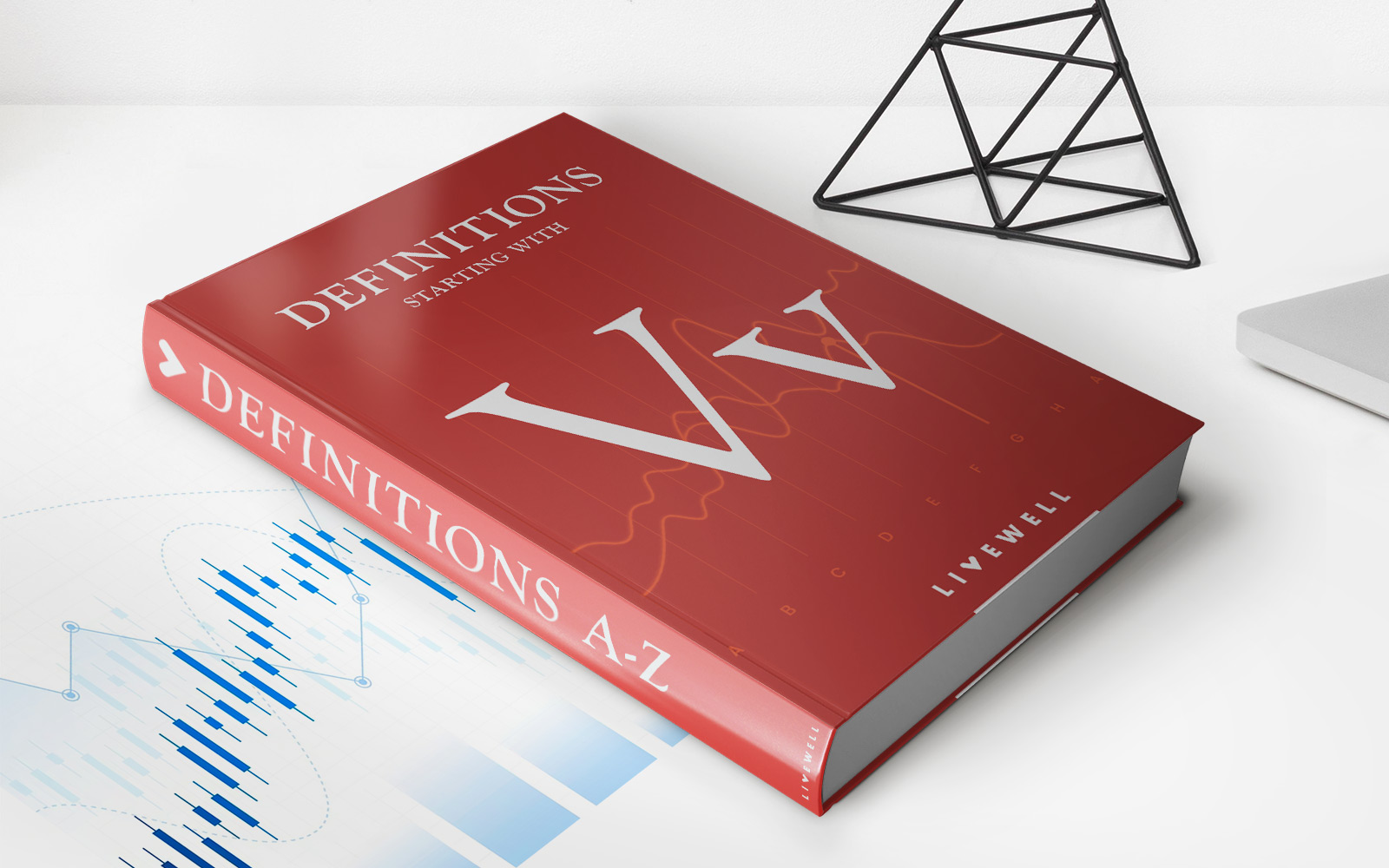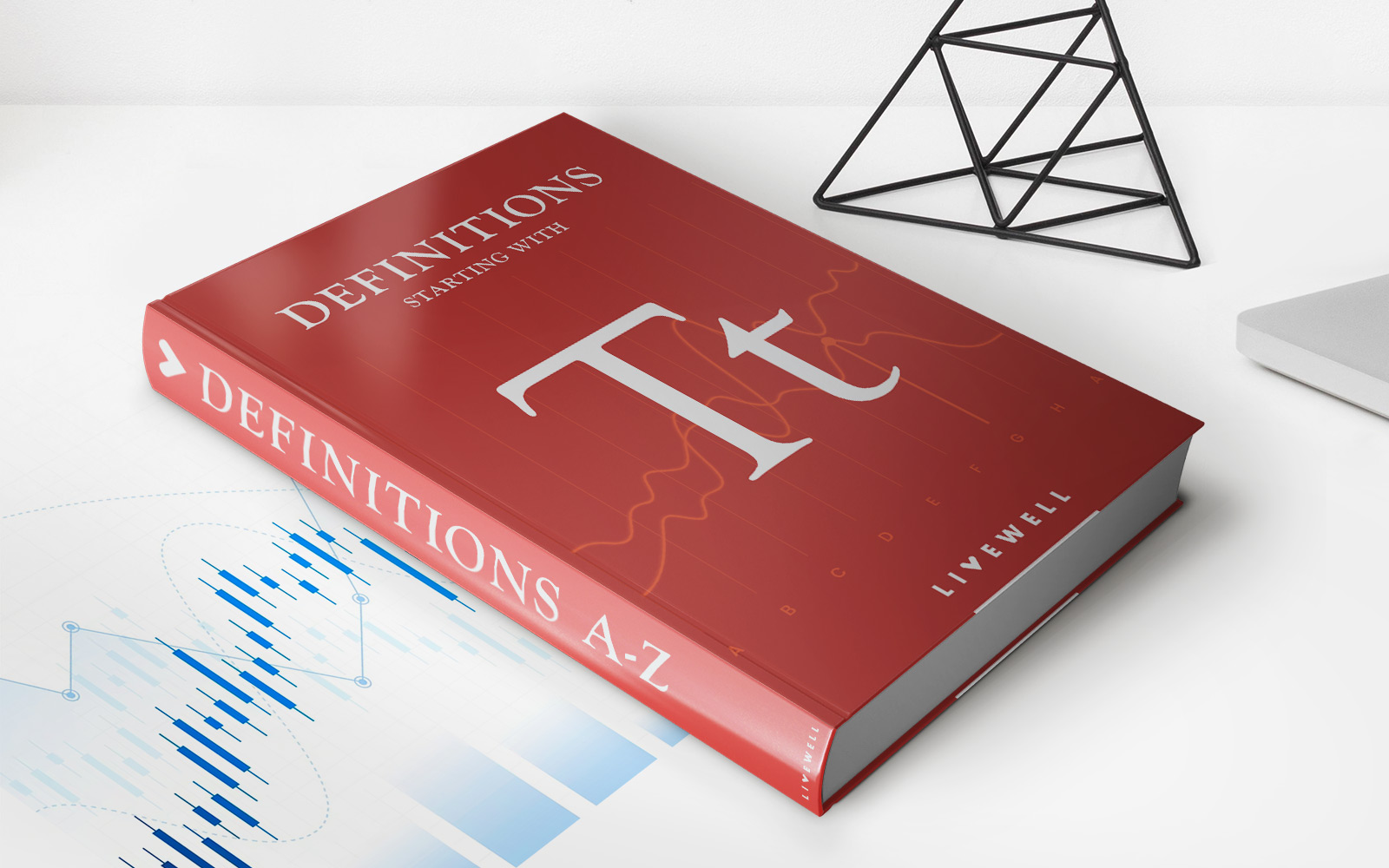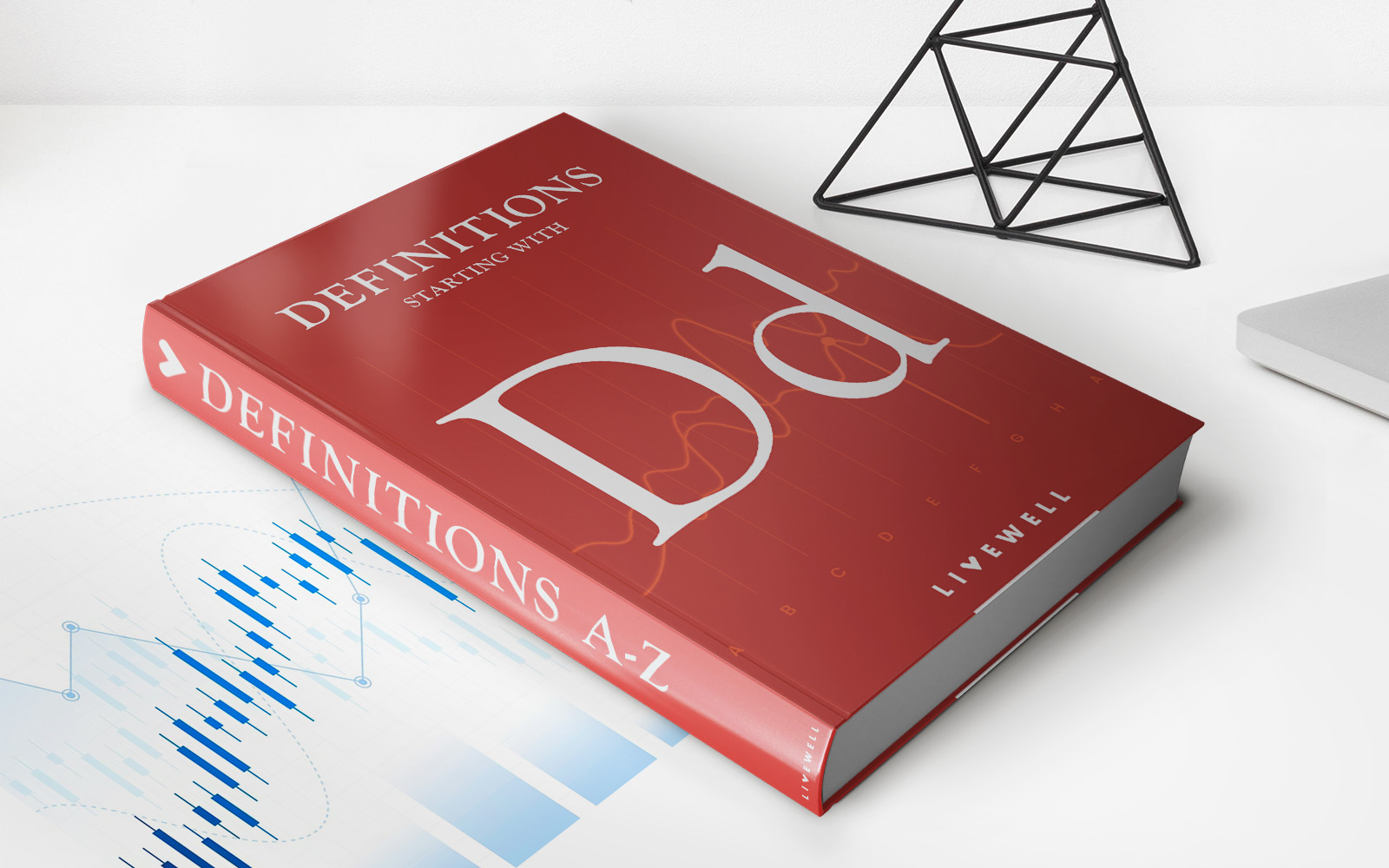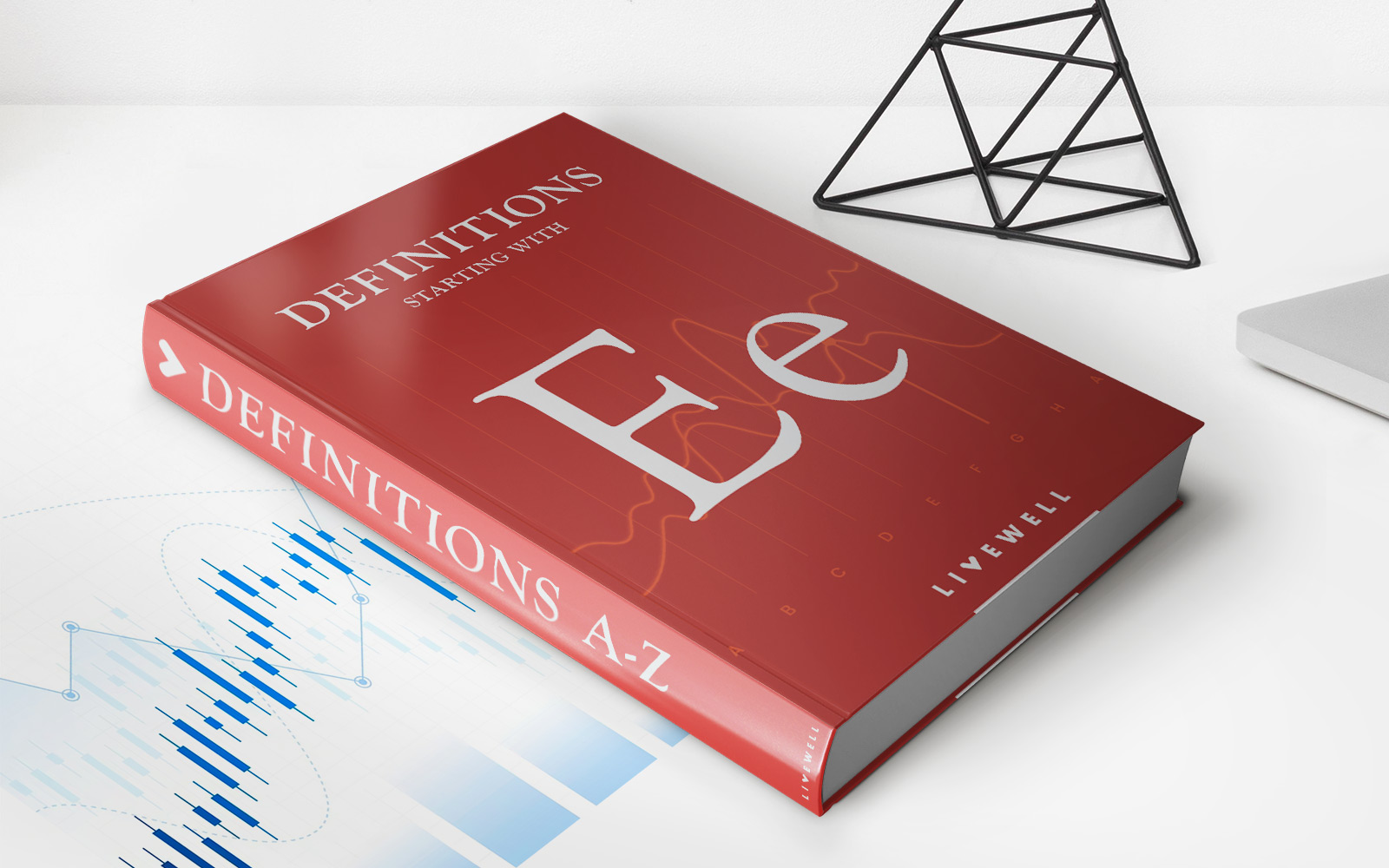Home>Finance>What Are The Living Benefits Of Life Insurance?


Finance
What Are The Living Benefits Of Life Insurance?
Modified: February 21, 2024
Discover the living benefits of life insurance and how it can provide financial security for you and your loved ones. Finance your future with peace of mind.
(Many of the links in this article redirect to a specific reviewed product. Your purchase of these products through affiliate links helps to generate commission for LiveWell, at no extra cost. Learn more)
Table of Contents
- Introduction
- Protection for Loved Ones
- Financial Security
- Cash Value Growth
- Tax Advantages
- Supplemental Retirement Income
- Loan Option
- Terminal Illness Benefit
- Chronic Illness Benefit
- Critical Illness Benefit
- Long-Term Care Benefit
- Accelerated Death Benefit
- Policy Conversion Option
- Final Expense Coverage
- Estate Planning Tool
- Charitable Giving
- Business Continuation Solution
- Conclusion
Introduction
Life insurance is an essential financial tool that provides protection and peace of mind. It offers a death benefit to your beneficiaries in the event of your passing, ensuring that they are taken care of financially. However, life insurance also offers a range of living benefits that can enhance your financial security and provide flexibility during your lifetime. These living benefits can be immensely valuable, allowing you to address various financial needs and goals as they arise.
While the primary purpose of life insurance is to provide a death benefit, it is worth exploring the additional benefits it offers. Understanding these living benefits can help you make informed decisions when selecting a life insurance policy and maximize the value of your coverage.
Whether you opt for term life insurance, whole life insurance, or universal life insurance, you can unlock a variety of advantages that go beyond protection. These benefits include the potential for cash value growth, tax advantages, supplemental retirement income, and even the ability to access funds through loans.
In this article, we will delve into the various living benefits of life insurance and how they can positively impact your financial well-being. From addressing long-term care needs to providing financial stability during times of illness, life insurance can serve as a versatile tool that goes beyond the traditional perception of protection.
Protection for Loved Ones
One of the primary and most well-known benefits of life insurance is the protection it provides for your loved ones. Life insurance ensures that your beneficiaries are financially supported in the event of your death. The death benefit can be used to cover funeral expenses, pay off outstanding debts, replace lost income, and provide for the future needs of your family.
For example, if you are the primary breadwinner in your family, your death could leave your spouse and children in a precarious financial situation. The life insurance proceeds can help them maintain their standard of living and cover essential expenses such as mortgage payments, utility bills, and education costs.
Life insurance can also provide peace of mind if you have dependents with special needs or individuals who rely on your financial support. By naming them as beneficiaries, you can ensure that they are taken care of after your passing. This can alleviate the burden on your loved ones and provide them with the financial resources necessary to meet their needs.
Additionally, life insurance can protect your loved ones from financial hardship if you have co-signed loans with them or have outstanding debts. The death benefit can be used to settle these obligations, preventing your family members from inheriting unnecessary financial burdens.
It is important to carefully consider the amount of life insurance coverage you need to adequately provide for your loved ones. Factors such as your income, outstanding debts, future expenses, and your family’s financial needs should be taken into account when determining the appropriate coverage amount. Consult with a financial advisor or insurance professional to ensure that you choose a policy that meets your specific requirements.
Financial Security
Life insurance provides a significant level of financial security for you and your loved ones. It ensures that you have a safety net in place to protect against unforeseen circumstances and financial hardships.
With life insurance, you can have peace of mind knowing that your loved ones will be taken care of financially in the event of your untimely demise. The death benefit provides a lump sum payout to your beneficiaries, which can be used to cover expenses and maintain their financial stability.
Furthermore, life insurance can also provide financial security during periods of financial uncertainty or hardship. Certain types of life insurance policies, such as whole life or universal life insurance, accumulate cash value over time. This means that as you pay your premiums, a portion of that money is set aside and grows tax-deferred. This cash value can serve as a potential source of funds during emergencies or for planned expenses such as a down payment on a home or funding your child’s education.
In addition to providing financial security for your loved ones, life insurance can also offer protection for your business or estate. If you are a business owner, life insurance can be utilized as a business continuation solution. It can provide the necessary funds to buy out a deceased partner’s share of the business or facilitate a smooth transition in ownership. For individuals with significant assets, life insurance can help cover estate taxes and ensure that your estate is transferred to your heirs without financial strain.
In summary, life insurance serves as a valuable tool in maintaining and safeguarding your financial security. By providing a death benefit to your beneficiaries and accumulating cash value, life insurance ensures that you and your loved ones are protected from financial uncertainties and can plan for the future with confidence.
Cash Value Growth
One of the unique features of certain types of life insurance policies, such as whole life insurance and universal life insurance, is the potential for cash value growth. Unlike term life insurance, which solely provides a death benefit, these permanent life insurance policies accumulate cash value over time.
When you pay your premiums on a whole life or universal life insurance policy, a portion of the money is allocated towards the policy’s cash value. This cash value grows over time on a tax-deferred basis. It is important to note that the cash value is separate from the death benefit and can be accessed while you are still alive.
The cash value growth in a life insurance policy can be a valuable asset. As the cash value grows, you may have the option to borrow against it or withdraw the accumulated funds. This can provide you with financial flexibility and the ability to access funds for various purposes, such as emergencies, education expenses, or supplementing your retirement income.
It is worth mentioning that borrowing against the cash value of a life insurance policy may impact the death benefit and the future growth of the policy. Any outstanding loans or withdrawals will reduce the death benefit that will be paid out to your beneficiaries. Therefore, it is crucial to understand the terms and conditions regarding loans and withdrawals from your policy.
The growth of cash value in a life insurance policy can offer a sense of financial security and provide you with an additional financial resource. It is advisable to consult with a financial advisor or insurance professional to fully understand the cash value growth potential of different life insurance policies and determine the best approach for your specific financial goals and needs.
Tax Advantages
In addition to providing financial protection and flexibility, life insurance also offers certain tax advantages that can help optimize your overall financial strategy. Understanding these tax benefits can be crucial when considering life insurance as part of your financial plan.
One of the key tax advantages of life insurance is the tax-free nature of the death benefit. The death benefit paid out to your beneficiaries is generally not subject to income tax. This means that your loved ones will receive the full amount of the death benefit without any tax deductions.
Furthermore, the growth of cash value within certain types of life insurance policies, such as whole life and universal life, is tax-deferred. This means that the accumulated cash value can grow over time without being taxed annually. This can be especially advantageous for individuals who are looking for a tax-advantaged way to build savings and accumulate wealth.
Additionally, withdrawals from the cash value of a life insurance policy are generally considered tax-free, up to the amount of the premiums paid. This provides you with the flexibility to access the accumulated funds without incurring a tax liability.
It is important to note that while life insurance offers tax advantages, there are certain limits and rules that apply. The tax treatment of life insurance policies can vary depending on the specific policy type and the jurisdiction in which you reside. It is recommended to consult with a tax professional or financial advisor to fully understand the tax implications of your life insurance policy and how it aligns with your overall tax planning strategies.
By taking advantage of the tax benefits of life insurance, you can effectively protect your loved ones and build your financial future in a tax-efficient manner. These tax advantages can help maximize the value of your life insurance coverage and ensure that you are making the most of your financial resources.
Supplemental Retirement Income
Life insurance can serve as a valuable tool for generating supplemental retirement income. While many individuals rely on traditional retirement savings vehicles such as 401(k) plans or IRAs, life insurance can offer an additional source of income during your retirement years.
Certain types of permanent life insurance policies, such as whole life or universal life insurance, accumulate cash value over time. This cash value growth can serve as a potential source of funds to supplement your retirement income. You can utilize the accumulated cash value by taking withdrawals or borrowing against the policy.
Withdrawals from the cash value of a life insurance policy can be taken on a tax-free basis, up to the amount of the premiums paid. This means that you can access the accumulated cash value without incurring a tax liability, providing you with a tax-efficient source of income during retirement.
In addition to withdrawals, you also have the option to borrow against the cash value of your policy. These policy loans are typically tax-free and do not need to be repaid. However, it is important to note that outstanding loans and withdrawals can reduce the death benefit that will be paid out to your beneficiaries.
By incorporating a life insurance policy with cash value growth into your retirement planning, you can diversify your income sources and potentially increase your retirement cash flow. This can provide you with greater financial flexibility and the ability to enjoy a comfortable retirement lifestyle.
When considering using life insurance for supplemental retirement income, it is important to work with a financial advisor or insurance professional who can help you determine the optimal amount of coverage and the best strategy for accessing the cash value. They can assist you in evaluating the tax implications and ensuring that your retirement income plan aligns with your overall financial goals.
Keep in mind that life insurance should not be the sole source of your retirement income, but rather a complementary component that adds to your overall retirement strategy. By incorporating life insurance into your retirement planning, you can create a more robust and diversified approach to securing your financial future.
Loan Option
In addition to providing financial protection and potential cash value growth, life insurance policies may offer a valuable loan option for policyholders. This loan feature allows you to access the cash value accumulated in your policy while still keeping the policy in force.
The loan option in a life insurance policy provides you with the ability to borrow funds against the cash value of your policy. The loan amount is typically determined by a percentage of the available cash value and is subject to interest charges. However, the interest rates on these policy loans are often lower than those of traditional bank loans or credit cards.
One of the significant advantages of taking a loan from your life insurance policy is the flexibility it offers. You are not required to undergo a credit check or provide collateral for the loan since the cash value serves as the collateral. This can be particularly beneficial for individuals who may have difficulty qualifying for traditional loans due to credit issues or lack of available assets.
Additionally, the loan from your life insurance policy does not need to be repaid on a specific schedule. You have the flexibility to repay the loan on your own terms, whether it be through regular payments or in a lump sum. However, it is important to note that any outstanding loan amount, including interest, will be deducted from the death benefit that will be paid out to your beneficiaries.
The loan option in a life insurance policy can be used for various purposes. It can provide funding for emergencies, such as unexpected medical expenses or home repairs. You can also utilize the loan to finance educational expenses for yourself or your children, or to cover other significant financial needs.
Before taking a loan from your life insurance policy, it is crucial to understand the terms and conditions associated with the loan. Familiarize yourself with the interest rate, repayment options, and any potential fees or penalties. Consulting with a financial advisor or insurance professional can help you assess whether borrowing against your policy is the right financial decision based on your specific circumstances.
Overall, the loan option in a life insurance policy offers flexibility and convenience during times of financial need. It can serve as a valuable financial resource that allows you to access the accumulated cash value of your policy without surrendering the coverage.
Terminal Illness Benefit
A terminal illness benefit is an essential living benefit that some life insurance policies offer. This benefit provides an advanced payout of a portion of the policy’s death benefit if you are diagnosed with a terminal illness and have a prognosis of a limited life expectancy.
When faced with a terminal illness, medical bills and other expenses can quickly accumulate. The terminal illness benefit can provide much-needed financial support during this challenging time. It allows you to access a portion of the death benefit while you are still alive, allowing you to address medical costs, make necessary arrangements, or fulfill any final wishes you may have.
The exact criteria for triggering the terminal illness benefit may vary depending on the specific policy and insurance provider. Typically, a medical professional will need to confirm your diagnosis and provide an estimate of your life expectancy. Once these requirements are met, a lump-sum or regular payments will be made, providing financial assistance during your illness.
It is important to note that the terminal illness benefit is generally only available for permanent life insurance policies and is not available with term life insurance. Therefore, it is advisable to consider the type of life insurance policy that best suits your needs, especially if the terminal illness benefit is a significant consideration.
The terminal illness benefit can provide valuable peace of mind during a difficult time. It ensures that you have financial resources available to manage your medical expenses and alleviate any potential burden on your loved ones. By accessing a portion of the death benefit, you can use the funds as needed to provide for yourself and your family, allowing you to focus on your health and well-being.
Understanding the specific terms and conditions of the terminal illness benefit is essential. Each policy may have different rules regarding the timing and amount of the payout, as well as any limitations or exclusions that apply. Consulting with a knowledgeable insurance professional can help you select a policy that offers comprehensive terminal illness coverage and aligns with your specific requirements.
Chronic Illness Benefit
A chronic illness benefit is a valuable living benefit that is offered by certain life insurance policies. This benefit provides financial support to policyholders who are diagnosed with a chronic illness that severely impacts their ability to perform daily activities without assistance or requires long-term care.
Unlike the terminal illness benefit, which is triggered by a limited life expectancy, the chronic illness benefit is designed for individuals who need ongoing care and assistance due to a chronic illness. This benefit provides access to a portion of the death benefit while you are still alive, helping to cover the costs associated with managing a chronic condition.
If you are diagnosed with a chronic illness and meet the eligibility criteria outlined in your life insurance policy, you may be eligible to receive a lump-sum or regular payments from the policy’s death benefit. These funds can be used to cover medical expenses, long-term care services, medication costs, or any other needs related to managing your condition.
It is important to emphasize that the specific criteria for triggering the chronic illness benefit can vary depending on the policy and insurance provider. Typically, a licensed healthcare practitioner will need to certify that you are chronically ill based on specific criteria outlined in the policy. It is advisable to review the terms and conditions of the policy carefully and consult with an insurance professional to understand the eligibility requirements.
The chronic illness benefit can be a financial lifeline for individuals and families dealing with the challenges of a chronic illness. It can help alleviate some of the financial burdens associated with ongoing care and provide resources to ensure that you receive the necessary support and treatment.
When selecting a life insurance policy, it is crucial to consider the inclusion of a chronic illness benefit if you or your loved ones have a higher risk of developing chronic conditions. By choosing a policy that offers this benefit, you are proactively protecting yourself and your family from the potential financial strain that may arise from managing a chronic illness.
As with any life insurance policy, it is essential to review the specific terms, limitations, and requirements of the chronic illness benefit. Understanding the details of the benefit and how it aligns with your unique circumstances will help you make an informed decision and choose the most appropriate coverage for your needs.
Critical Illness Benefit
The critical illness benefit is a valuable living benefit offered by certain life insurance policies. This benefit provides a lump-sum payment to the policyholder in the event of a diagnosis of a specified critical illness. It is designed to help alleviate the financial burden associated with the costs of treatments, medication, and lifestyle adjustments.
Unlike the terminal illness benefit or the chronic illness benefit, which are triggered by specific medical conditions or life expectancies, the critical illness benefit covers a predefined list of critical illnesses such as heart attack, stroke, cancer, organ transplant, or major organ failure. If you are diagnosed with one of these covered illnesses and meet the policy’s criteria, you will receive a one-time payment from your life insurance policy.
The critical illness benefit offers financial support during a challenging time, allowing you to focus on your recovery rather than financial stress. The lump-sum payment can be used to cover medical expenses not covered by health insurance, seek expert medical advice, and seek alternative treatments or therapies not covered by traditional health insurance.
The critical illness benefit can also provide financial stability by helping you meet your financial obligations, such as mortgage payments, household bills, and debts, during your recovery period. It offers flexibility and the freedom to allocate the funds as needed, depending on your specific circumstances.
It is important to note that the specific list of covered critical illnesses and the conditions for triggering the benefit may vary depending on the insurance policy. Some policies may also offer additional riders or options that allow you to customize the coverage to suit your individual needs.
Before selecting a life insurance policy with a critical illness benefit, it is crucial to thoroughly review the terms and conditions, the list of covered illnesses, and any exclusions. Consulting with an insurance professional can help you understand the scope of coverage and determine if the policy aligns with your specific health concerns and financial goals.
Having a critical illness benefit within your life insurance policy provides an additional layer of protection and peace of mind. It ensures that you have financial resources available to ease the financial burden associated with a critical illness, allowing you to focus on your recovery and well-being.
Long-Term Care Benefit
Long-term care refers to the assistance and support needed when an individual is unable to perform activities of daily living or requires extensive help due to a chronic illness, disability, or cognitive impairment. To address the costly expenses associated with long-term care, some life insurance policies offer a long-term care benefit.
The long-term care benefit within a life insurance policy provides coverage for expenses related to long-term care services. This may include assistance with activities such as bathing, dressing, eating, mobility, and managing medications. Additionally, it can cover services provided in different settings like home care, assisted living facilities, or nursing homes.
The long-term care benefit can be accessed when a licensed healthcare professional certifies that the policyholder meets the criteria for receiving long-term care services. The benefit can provide a daily or monthly dollar amount, which can be used to pay for various long-term care expenses.
This benefit is particularly valuable as it helps individuals plan for the potential need for long-term care while preserving their financial resources. It offers protection against the high cost of long-term care services, which can quickly deplete savings and place a strain on personal finances.
It is important to note that the specific terms and conditions of the long-term care benefit can vary depending on the policy and insurance provider. Some policies may include a waiting period before the benefit becomes available, while others may have age or health restrictions.
When considering a life insurance policy with a long-term care benefit, it is essential to carefully review the coverage details, including any limitations, waiting periods, or restrictions. Understanding the specific terms of the benefit will help you determine if it aligns with your long-term care planning needs.
Consulting with a financial advisor or insurance professional is recommended to assess your personal long-term care goals and evaluate the different options available. They can help you navigate the complexities of long-term care insurance and determine the most suitable solution for your specific circumstances.
By incorporating a long-term care benefit into your life insurance policy, you can have peace of mind knowing that you have a financial resource to help you maintain your quality of life in the event that long-term care services become necessary.
Accelerated Death Benefit
The accelerated death benefit is a significant living benefit offered by many life insurance policies. This benefit allows policyholders to access a portion of their death benefit while they are still alive if they are diagnosed with a qualifying terminal or catastrophic illness.
In the event of a qualifying illness, the accelerated death benefit provides policyholders with the option to receive a lump-sum payment or periodic payments to help cover medical expenses, treatment costs, or other financial obligations that may arise. This benefit can provide much-needed financial relief and allow individuals to focus on their health and well-being during challenging times.
The accelerated death benefit typically has specific eligibility criteria outlined in the life insurance policy, which may include a minimum remaining life expectancy and a defined list of qualifying illnesses. The specific terms and conditions can vary between insurance providers and policy types, so it is essential to carefully review the policy details to understand the coverage and limitations.
It is important to note that accessing the accelerated death benefit reduces the overall death benefit that will be paid out to the policy’s beneficiaries upon the insured’s passing. However, it can offer substantial financial assistance when needed most, providing policyholders with greater control over their finances and the ability to address immediate expenses.
Having an accelerated death benefit as part of a life insurance policy can offer valuable financial protection and peace of mind. It ensures that policyholders can access necessary funds during a difficult period, allowing them to seek appropriate medical care and maintain their quality of life.
Before selecting a life insurance policy with an accelerated death benefit, it is essential to understand the specific terms and conditions of the benefit. Consider consulting with an insurance professional to review your options and ensure that the policy aligns with your individual needs and financial goals.
Having the option to access a portion of the death benefit in the form of an accelerated death benefit provides valuable financial flexibility and support during challenging times. It offers policyholders a measure of control and relief when facing a terminal or catastrophic illness.
Policy Conversion Option
A policy conversion option is a valuable feature offered by some life insurance policies that allows policyholders to convert their existing policy into a different type of policy without the need for a new underwriting process or a medical examination. This option provides flexibility and adaptability to meet changing financial circumstances or insurance needs.
When you initially purchase a life insurance policy, you may choose a specific type of coverage, such as term life insurance. Term life insurance provides coverage for a specified period, typically 10, 20, or 30 years. However, as your circumstances change, you may find that your insurance needs evolve as well.
The policy conversion option allows you to convert your term policy into a permanent life insurance policy, such as whole life or universal life insurance, without the need to requalify based on your health or undergo a new underwriting process. This means that even if your health has deteriorated since purchasing the policy, you can still convert it into a permanent policy with lifelong coverage.
There are several benefits to exercising the policy conversion option. First, it allows you to maintain life insurance coverage beyond the expiration date of your term policy. This is particularly valuable if you have developed health conditions that may make it challenging for you to obtain new life insurance coverage at a later stage.
Secondly, permanent life insurance offers various benefits that term life insurance does not, such as potential cash value accumulation, lifelong coverage, and the ability to access the cash value through loans or withdrawals. By converting your policy, you can take advantage of these benefits and tailor your coverage to better align with your long-term financial goals.
It is important to note that there are certain time limitations and restrictions on when the policy conversion option can be exercised. Typically, the conversion option is available within a specified period, often before a certain age or within the first few policy years. Reviewing the policy’s terms and contacting your insurance provider are crucial to understanding the specific conversion provisions that apply to your policy.
The policy conversion option provides valuable flexibility and adaptability in adjusting your life insurance coverage as your needs change over time. It allows you to maintain coverage beyond the initial term and potentially access additional benefits offered by permanent life insurance policies.
Considering a policy conversion option when selecting a life insurance policy can provide peace of mind knowing that you have the option to modify your coverage in the future without the need for further underwriting or medical examinations.
Final Expense Coverage
Final expense coverage, also known as burial insurance or funeral insurance, is a type of life insurance specifically designed to cover the costs associated with end-of-life expenses. This type of coverage is intended to provide financial assistance to loved ones so that they can handle funeral costs, burial or cremation expenses, medical bills, and any outstanding debts left behind.
Funerals and related expenses can be a significant financial burden on a family during an already difficult time. Final expense coverage helps alleviate this burden by providing a specific death benefit amount that is designated for covering these costs. This ensures that loved ones are not left with the financial responsibility of paying for funeral arrangements and final medical bills out of pocket.
Final expense coverage is typically available as a whole life insurance policy, which means it provides lifelong coverage and builds cash value over time. The premiums for this type of policy are usually affordable and remain constant throughout the life of the policy, making it a manageable financial commitment.
One of the primary advantages of final expense coverage is its simplicity. Compared to other types of life insurance policies, the underwriting process for burial insurance is often less stringent, making it accessible to individuals who may have difficulty obtaining traditional life insurance due to health conditions or age.
When considering final expense coverage, it is crucial to assess your specific needs and ascertain the appropriate death benefit amount. Meeting with an insurance professional can help you determine the appropriate coverage and understand any limitations or exclusions that may apply. Additionally, it is advisable to involve your loved ones in the decision-making process to ensure that their preferences and needs are taken into account.
By obtaining final expense coverage, you can have peace of mind knowing that your loved ones will have the financial means to handle the expenses associated with your funeral and other end-of-life costs. It provides them with the support and financial stability they need during an emotionally challenging time, allowing them to focus on grieving and honoring your memory.
Estate Planning Tool
Life insurance serves as a valuable estate planning tool, allowing individuals to efficiently transfer wealth to their beneficiaries and minimize the financial burdens associated with estate taxes and other expenses. By incorporating life insurance into your estate plan, you can ensure the smooth transfer of assets, preserve the value of your estate, and provide for your loved ones in a tax-efficient manner.
One of the primary advantages of using life insurance in estate planning is its ability to provide an immediate source of liquidity. Upon your passing, the death benefit from the life insurance policy can help cover various expenses, including estate taxes, legal fees, probate costs, and any outstanding debts or obligations. This ensures that your estate remains intact and can be distributed to your beneficiaries according to your wishes.
Life insurance also offers significant tax advantages when used as an estate planning tool. The death benefit is generally received income tax-free, allowing your beneficiaries to receive the full amount of the policy’s proceeds without any deductions. This can provide a substantial financial benefit and help preserve the value of your estate.
Moreover, life insurance can help provide equal distribution of assets among beneficiaries, especially when certain assets, such as a family business or real estate, may be difficult to divide. The death benefit from a life insurance policy can offset the value of these assets, ensuring that each beneficiary receives their fair share.
When incorporating life insurance into your estate planning, it is essential to consider factors such as the proper ownership and beneficiary designation of the policy. The ownership structure and beneficiaries should align with your overall estate planning goals, address potential tax implications, and accommodate any changes in your personal and financial situation over time.
Consulting with an estate planning attorney or financial advisor is highly recommended when creating or reviewing your estate plan. They can help you identify the most suitable life insurance policy, determine the appropriate coverage amount, and ensure that your estate plan meets your specific needs and objectives.
By utilizing life insurance as an estate planning tool, you can enhance the efficiency and effectiveness of your estate distribution, mitigate potential tax liabilities, and provide for your loved ones in a seamless and tax-efficient manner.
Charitable Giving
Life insurance can play a significant role in charitable giving by allowing individuals to leave a lasting impact and support causes they are passionate about. By designating a charitable organization as a beneficiary or creating a charitable giving strategy using life insurance, you can ensure that your philanthropic goals are realized even after you are no longer here.
There are several ways life insurance can be used for charitable giving. One approach is to name a charitable organization as the beneficiary of a life insurance policy. Upon your passing, the death benefit will be paid directly to the designated charity, providing them with a substantial financial contribution. This allows you to make a significant impact and support a cause that aligns with your values.
Another option is to create a charitable remainder trust using life insurance. This involves transferring a life insurance policy into a trust and designating the charity as the ultimate beneficiary. You retain the right to receive income from the trust during your lifetime or for a specific period. After your passing, the remaining assets in the trust are distributed to the charitable organization. This strategy can provide you with tax benefits and potentially generate income during your lifetime, while still supporting a charitable cause.
Additionally, life insurance can be used to replace assets given to a charitable organization. For example, if you plan to make a sizable gift to a charity during your lifetime, you can simultaneously purchase a life insurance policy with a death benefit equal to the value of the gift. This ensures that your loved ones are not financially burdened by the donation, as the life insurance proceeds will replace the value of the charitable gift.
When considering charitable giving through life insurance, it is essential to work with an attorney or financial advisor experienced in estate planning and philanthropy. They can help you navigate the legal and tax implications, ensure compliance with charitable giving laws, and create a strategy that aligns with your philanthropic goals.
By incorporating life insurance into your charitable giving plans, you can leave a lasting legacy and make a meaningful contribution to causes that are important to you. It allows you to support the organizations and initiatives that reflect your values even after you are gone, leaving a positive impact on society and future generations.
Business Continuation Solution
For business owners, ensuring the continuity and smooth transition of their business is a critical consideration. Life insurance can serve as a valuable tool in providing a business continuation solution, safeguarding the future of the company and protecting the interests of stakeholders.
In the event of the death of a business owner or a key employee, the financial implications can be significant. The loss of a key person can create instability, disrupt operations, and potentially jeopardize the long-term viability of the business. Here’s where life insurance can play a crucial role.
By obtaining life insurance on the owner or key individuals within the company, the death benefit can provide financial resources to address potential issues that may arise. These funds can be used to cover outstanding business loans, satisfy the buyout requirements of a deceased owner’s shares, or facilitate a smooth transition of ownership.
Life insurance can provide essential liquidity, ensuring that there are immediate funds available to effectively manage the business during a time of transition. This can be particularly valuable for small businesses or family-owned enterprises where financial resources may be limited.
In addition to protecting the business itself, life insurance can also help safeguard the financial well-being of the deceased owner’s family. By providing a death benefit, the financial burden on the family can be alleviated, allowing them to meet their ongoing expenses and maintain their quality of life.
Choosing the appropriate type and amount of life insurance coverage for business continuation requires careful consideration. Factors such as the size and structure of the business, the financial obligations, and the roles and contributions of key individuals need to be evaluated when determining the necessary coverage.
Consulting with a financial advisor or an insurance professional with experience in business continuation planning is crucial. They can help you assess the specific needs of your business, navigate legal and tax considerations, and determine the most effective life insurance strategy to ensure the smooth continuation of your business.
By employing life insurance as a business continuation solution, you can protect the financial stability of the business, provide for the transition of ownership, and offer peace of mind to both stakeholders and family members. It serves as a vital safeguard, enabling the business to overcome the challenges that may arise due to the loss of key individuals.
Conclusion
Life insurance offers a wide range of living benefits that extend beyond its traditional purpose of providing a death benefit. These living benefits can enhance your financial security, address various needs and goals, and contribute to a comprehensive and effective financial plan.
From protecting your loved ones and providing financial security to accumulating cash value and offering tax advantages, life insurance proves to be a versatile tool. It can serve as a means to supplement retirement income, access funds through loans, and create a lifeline during times of terminal illness or chronic conditions.
Additionally, life insurance plays a vital role in estate planning, ensuring the efficient transfer of wealth, minimizing tax liabilities, and providing for charitable giving. It can also act as a crucial component of business continuation, safeguarding the future of your enterprise and protecting the interests of stakeholders.
As you explore life insurance options, it is crucial to assess your specific needs and financial goals. Consider factors such as coverage amounts, policy types, and the specific benefits and features that align with your circumstances. Consulting with a financial advisor or insurance professional can provide valuable guidance in navigating the intricacies of life insurance and determining the most suitable policy for your individual situation.
In conclusion, life insurance offers not only peace of mind but also a wide array of living benefits that can positively impact your financial well-being. Whether you are seeking protection for your loved ones, planning for retirement, providing for long-term care, or addressing specific financial goals, life insurance proves to be a versatile and valuable tool that can help secure your financial future.














